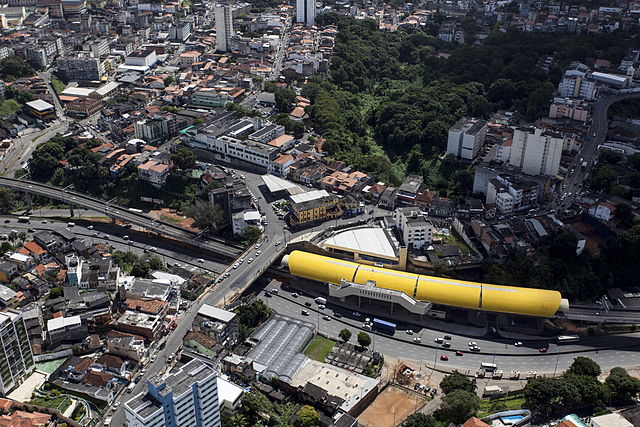Happening Now
Brazilians demand more train service
June 27, 2013
Written By Colin Leach

Responding to public demonstrations against rising fares, Brazilian President Dilma Rousseff announced $25 billion of new funding for public transportation over the next few years. In a meeting with state governments and major city mayors, Rousseff stated that Brazil’s burgeoning economy needs a change in the “framework of [th]the transportation system”, including the construction of new subways and light rail systems. While she acknowledged that Brazil has only “very recently” embraced the need for investment in subways, she nevertheless vowed to move forward and capitalize on “major investments” already made.
While much of the government’s investment comes as a response to recent protests, Financial Times correspondent Joe Leahy argues that Brazil’s current crisis is due in no small part to a national obsession with the car. Following Brazil’s economic boom of the 1970s, automobiles became more and more popular as a sign of middle class. Coupled with government support for auto manufactures, the number of privately-owned cars in Brazil has doubled since 2002, reaching a dramatic 79 million. As the fourth largest auto market in the world, Brazil’s past investments in transportation have been disproportionately focused on highways.
Yet, as João Augusto de Castro Neves, an analyst at Eurasia Group, maintains, “the bill” for Brazil’s highway obsession must be paid. Failure to invest in alternatives to highways have meant that certain parts of the national highway network have seen a 56% increase in traffic since 2009. Furthermore, the alternatives that have been offered have been plagued with delays and cost overruns. As an example, Leahy laments that Line 4 of São Paulo’s Metro has been under construction for two decades and is still not completely operational.
Mass protests turning the tide
The demonstrations have caused an abrupt reevaluation of transit investment levels, and it’s not just the federal government that is pivoting. Following the national government’s lead, local administrations have announced their own plans. São Paolo’s state government announced its intention to invest $17.6 billion in multiple projects, including extensions of the metro network as well as construction of a new monorail. Perhaps most importantly, the state government also announced its intention to fund new intercity rail service. In the words of Julio Semeghini, the state’s secretary for planning, Sao Paulo is investing in rail because it is the “only way forward for public transport. São Paulo will not survive if we don’t do it.”
In making profound investments in rail transportation, Brazil acknowledged the benefits of fully-developed multimodalism. While highways have in the past been agents of economic development, continuing highway-centric transportation policies to the exclusion of other modes promotes the continuation of a deficient, antiquated transportation system. By investing in subways, light rail, and intercity rail, the burden is taken off of highways and distributed more evenly.
Finally, investing in public transportation represents fulfillment of existing public demand. Brazilians, tiring of the strain placed on their time and pocketbooks by the country’s auto dependence, have spoken out repeatedly in favor of better public transportation and more choices. So far, it appears that Brazil’s government is heeding the wishes of its citizens.
"I’m so proud that we came together in bipartisan fashion in the Senate to keep the Southwest Chief chugging along, and I’m grateful for this recognition from the Rail Passengers Association. This victory is a testament to what we can accomplish when we reach across the aisle and work together to advance our common interests."
Senator Tom Udall (D-NM)
April 2, 2019, on receiving the Association's Golden Spike Award for his work to protect the Southwest Chief
Comments